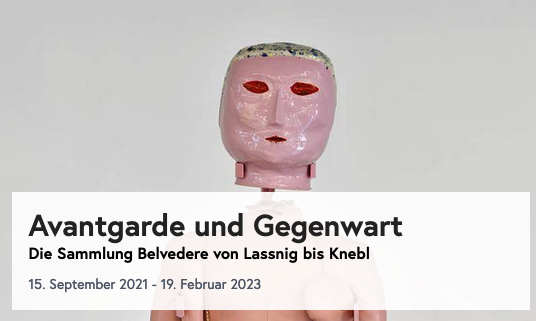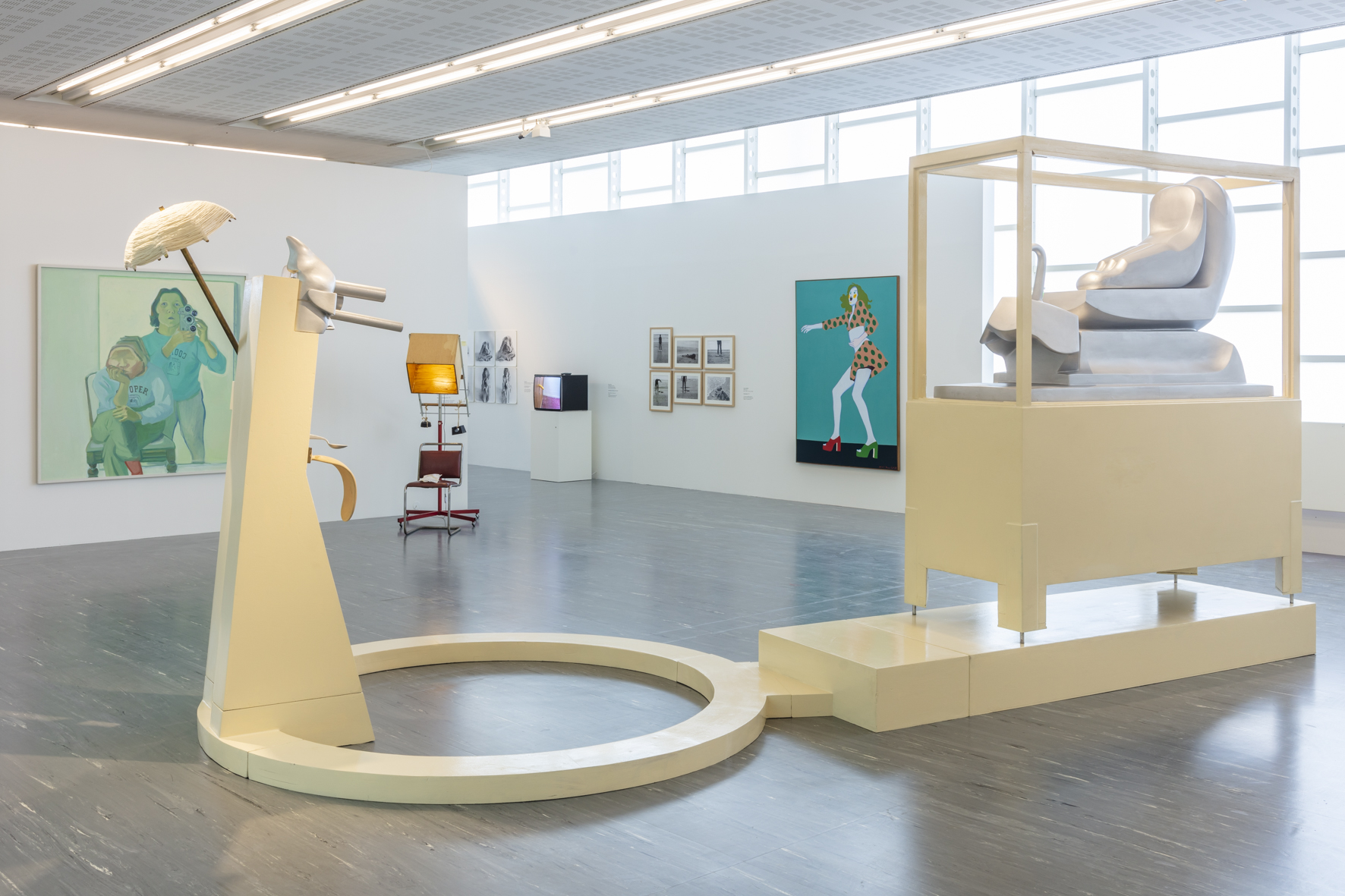
Foto: Johannes Stoll / Belvedere, Wien
ON THE EXHIBITION – September 15, 2021 – February 19, 2023
Toni Schmale and Fritz Wotruba, Maria Lassnig and Sarah Lucas, Ashley Hans Scheirl and Rudolf Hausner, Carola Dertnig and Rudolf Schwarzkogler, Jakob Lena Knebl and Robert Zeppel-Sperl, Melanie Ebenhoch and Bruno Gironcoli—works by these and many other artists come together in this exhibition. The resulting interplay between the avant-garde and the con- temporary is sometimes obvious, sometimes surprising—a testimony
to dynamics and urgencies, continuities and ruptures.
Based on the museum’s holdings from the twentieth and twenty-first cen- turies, this collection presentation does not imagine the frequently cited “zero hour” 1945 as the beginning of the Austrian postwar avant-gardes, nor does it chart their linear development. Rather, it attempts to make tangible parallels and crossovers, but also counter-models in art since the 1930s, through six narrative strands: Collections and Fractured Realities, as a start, is devoted to the politico-historical distortions that have had an impact up to the present day and that have essentially determined the development of modernist tendencies. Surreal Narratives traces the enduring presence of surreal aesthetics. The narrative strand Abstrac- tions gathers historical and contemporary approaches to non-figurative art. Forms of the Informal oscillates between gestural expression and strategies of chance. Performative Bodies tells of the use of the human body as artistic material, as well as the critical confrontation with its representation. Finally, Re-visions takes a look at artistic negotiations of historiography and the social present and reconnects to the beginning of the exhibition.
A significant number of the featured works originate from the Artothek des Bundes, which has been administered by the Belvedere since 2012.
The texts that follow outline the six narrative strands by giving exemplary explanations on a selection of works. Further short texts offer contextual information on some movements, organizations, and artists’ groups.
Luisa Ziaja, Curator
Ashley Hans Scheirl

Foto: Johannes Stoll / Belvedere, Wien
Courtesy Galerie Crone, Wien
The narrative strand Surreal Narratives gathers dreamlike, unconscious, absurd, and fantastical pictorial inventions and runs through the entire show. Time and again, artistic procedures of alienation, displacement, and transgression of the real seem suitable for grasping the difficult rela- tionship of the individual to the world. After the trauma of World War I, the Surrealist movement formed in Paris in 1924. Although it technically existed until 1969, at the start of World War II, it deteriorated due to the emigration of numerous members. Thus, the surrealist aesthetic further developed beyond Paris and Europe.
In general, the surreal seems to be experiencing a boom in our crisis- riddled present, consider, for example, Neoliberal Surrealist, 2019 (23), a self-portrait by Ashley Hans Scheirl pissing in the midst of an end-times setting.
Jakob Lena Kneb
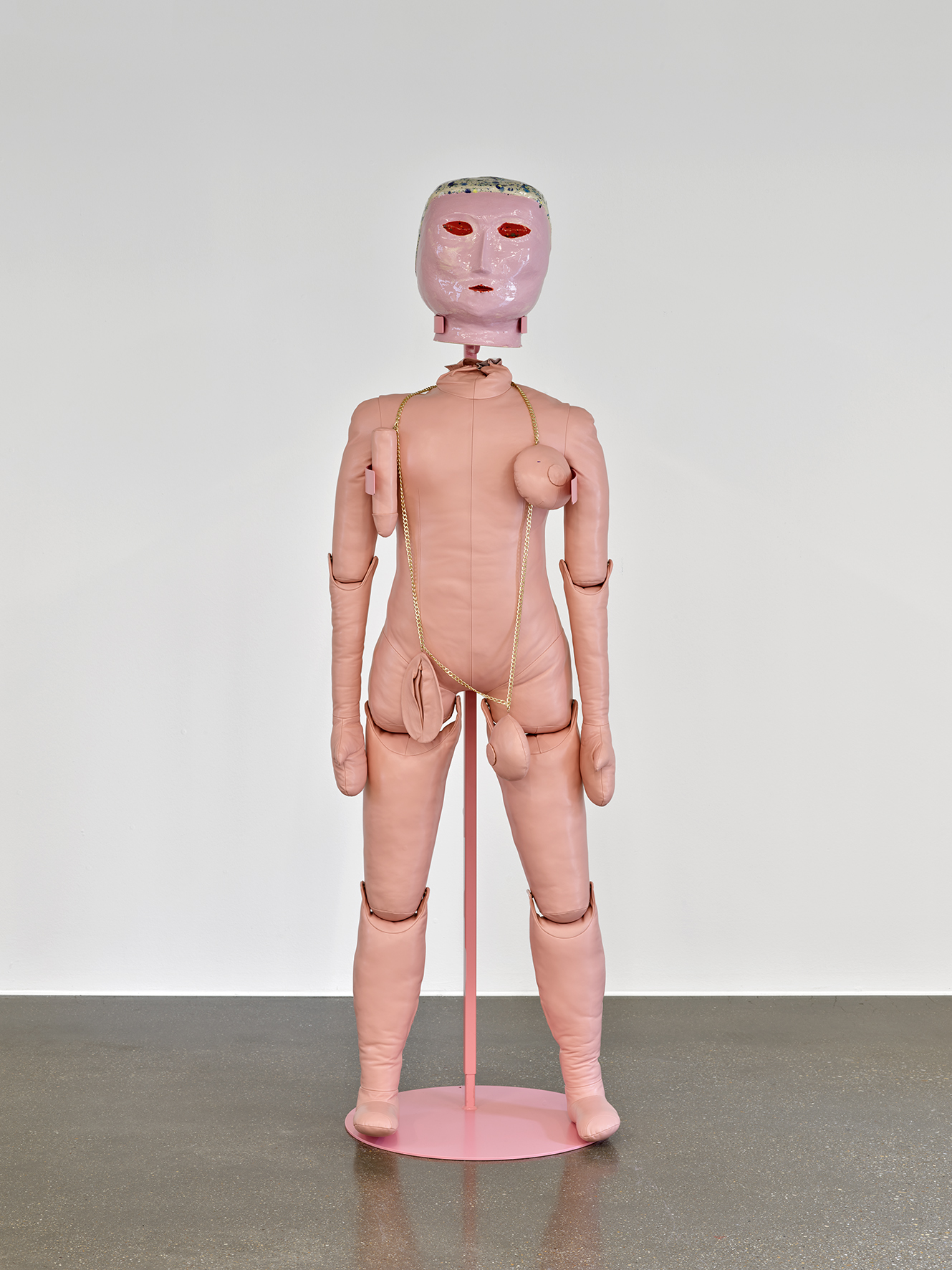
Foto: Johannes Stoll, Belvedere, Wien / © Bildrecht, Wien 2021
In all sections of the exhibition, artworks tell of the use of the human body as a raw material for art, as well as a critical reassessment of
its representation.
Iridescent identities which oscillate between genders, a sensual coal- escence of high and low culture, kitsch and art history, stand at the core of the works by Jakob Lena Knebl (Joan, 2019).
Curt Stenvert
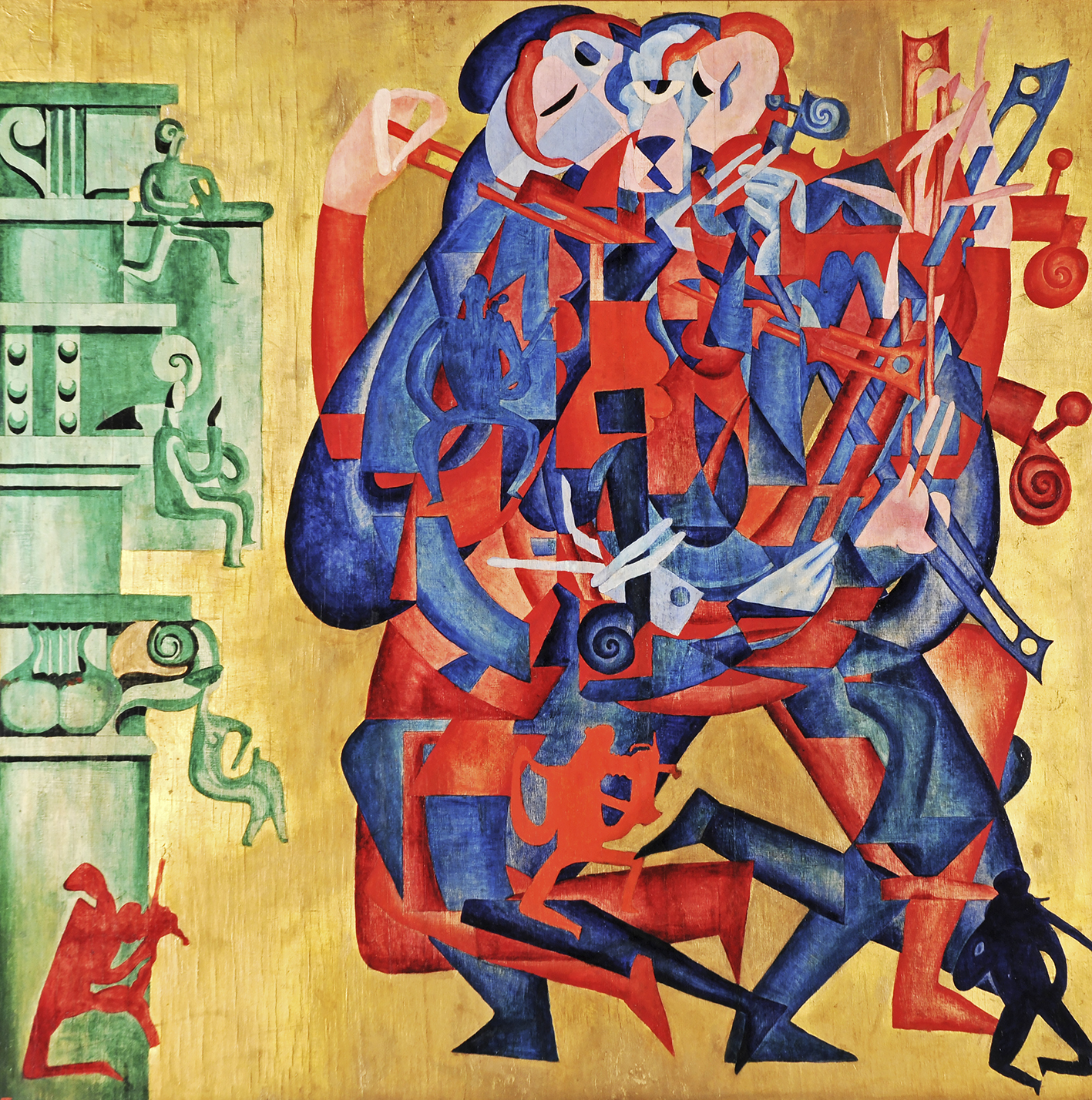
Belvedere, Wien / Artothek des Bundes, Dauerleihgabe im Belvedere, Wien / © Bildrecht, Wien 2021
Abstraction and non-representational art are considered key achievements of early twentieth-century art. In the Austrian context, the exploration
of these approaches is marked by non-concurrencies and ruptures. The constructive Jugendstil of Viennese Modernism around 1900 had already anticipated geometric abstraction with its design principles.
However, the international tendencies in Cubism, Futurism, and Constructivism were received with a time gap and only selectively in the early 1920s: thus, Viennese Kineticism emerged from Franz Čižek’s progressive “Ornamental Form” class at the School of Arts and Crafts. Kineticism invents a formal language for the dynamization of the interior as well as exterior Lebenswelt.
Only after 1945 these tendencies were first taken up again in an unprec- edented intensity: at a time when abstraction was considered the incarnation of freedom and was dominating the discourse of the incipient Cold War. Testifying to this are, for instance, Curt Stenvert’s Violin Player in Four Phases of Movement, 1947.
Maria Lassnig

Artothek des Bundes, Dauerleihgabe im Belvedere, Wien © Maria Lassnig Stiftung/ Bildrecht, Wien 2021; Foto: Johannes Stoll
As a site of local and international networking, Art Club (1947–1959) occupied a central position in the emergence of the postwar avant-gardes in Austria. Initiated by Gustav Kurt Beck, the artists’ association pursued a decidedly anti-fascist orientation in a post-Nazi society. The Art Club’s most effective activities took place from 1948 to 1953 with exhibitions in the Zedlitzhalle and the so-called Strohkoffer, a basement venue below Adolf Loos’s American Bar in Vienna’s city center. In this extremely tight space, nearly all young artists of the time assembled under the patronage of the academy professor Albert Paris Gütersloh, such as Friedensreich Hundertwasser, Maria Lassnig, Fritz Wotruba, Johanna Schidlo-Riedl, Arnulf Rainer, Hilda C. Polsterer, Arik Brauer, Rudolf Hausner, and last but not least, Maria Biljan-Bilger, one of the Art Club’s most energetic members. Initially in this “melting pot of all modernists” (Tobias G. Natter), a coexistence of very different tendencies took place, first and foremost, the surrealists and the abstract artists. In 1951, the “Hundsgruppe” [Dog Pack] group around Fuchs, Brauer, Rainer, and Lassnig splintered off, from which, in turn, the abstract artists around the new Galerie St. Stephan evolved in 1954.

© Courtesy the artist and Zak Branicka Gallery, Berlin
At its beginning, the exhibition tells of collections as accumulations—of things that come from different contexts and times yet are always seen from the perspective of the immediate present. In their encounter, they interact in an animistic-magical way, such as in Eclipse, 2012, by Agnieszka Polska.
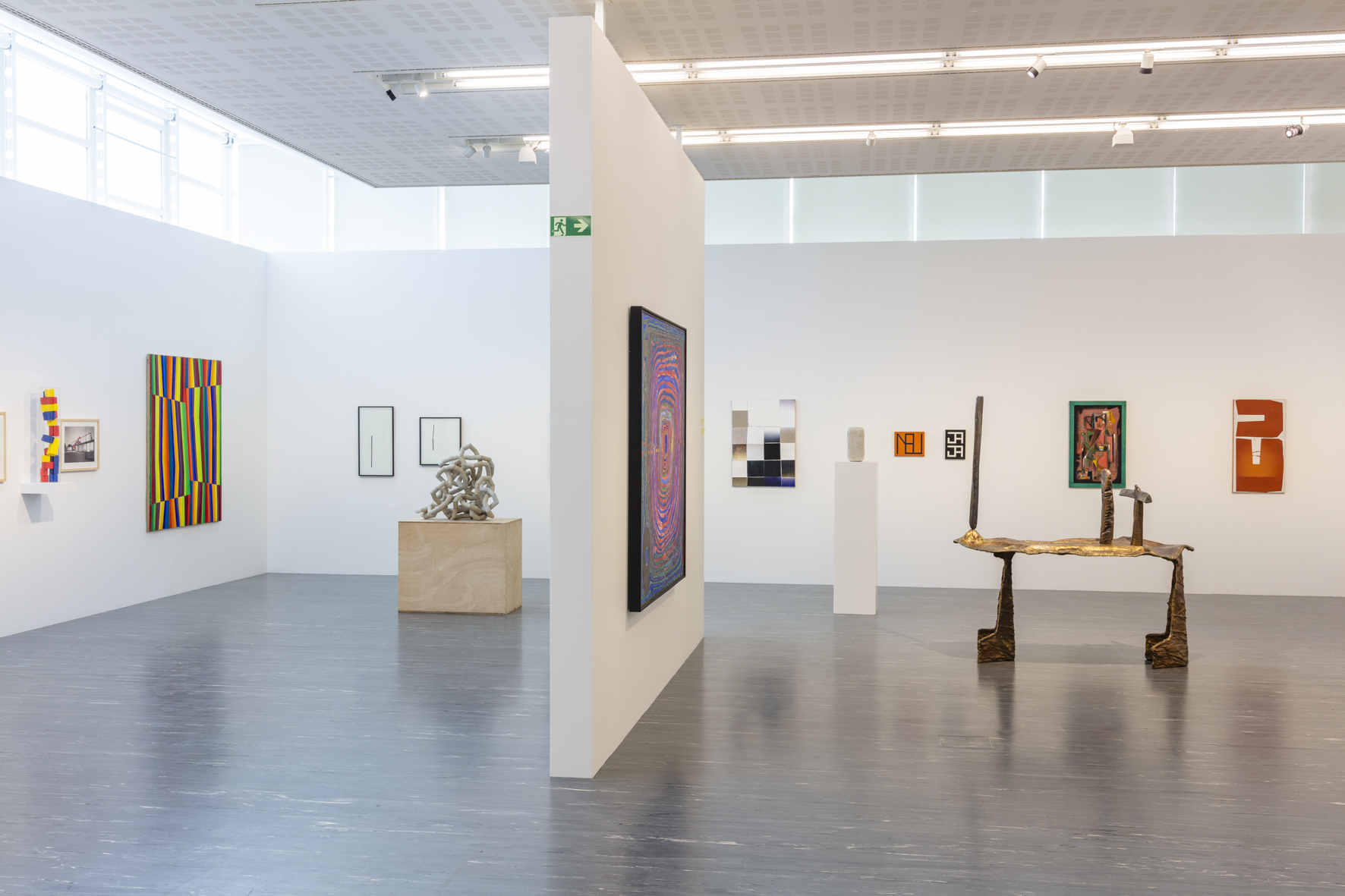
Foto: Johannes Stoll / Belvedere, Wien
Source: Österreichische Galerie Belvedere
https://www.belvedere.at/
